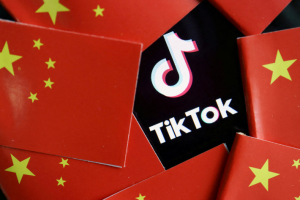Everyone is expecting them to step off the money-go-round and spend their hard-earned cash.
But Chinese consumers appear more interested in saving their salaries than saving the world’s second-largest economy from stagnating growth.
Instead of splashing out on branded retail items, they are tightening their belts amid concerns that a Covid-19 second wave could be just around the corner from their local mall.
“A return to public spaces might expose them to a new outbreak,” the Southwestern University of Finance and Economics in the Sichuan capital of Chengdu, and Ant Financial, an affiliate of the Alibaba group, stated in a report released last week.
Job insecurity was also highlighted in the study compiled during the first quarter of the year when people were still in lockdown across China. But although the size of the poll was not disclosed, it did cover future spending trends.
A snapshot showed that 50.2% of households were more interested in boosting their savings than making major purchases.
“The first is the worry about the epidemic [but] secondly, there are concerns about employment and income growth. Most residents, especially low and middle-income people, work in small and micro-enterprises. If these enterprises fail to [get back to normal], the impact on consumption cannot be underestimated,” the report said.
Economic activity
In the opening months of the year, vast regions of China went into lockdown after the Covid-19 outbreak in Wuhan spread across Hubei province and the rest of the country.
Factories, businesses and stores were shut down along with hotels, cinemas and other entertainment venues. Economic activity barely registered a heartbeat.
But as the country returned to work, the true cost of tackling the coronavirus started to emerge.
First-quarter GDP contracted by 6.8% compared to the opening three months in 2019. It was the first reported period of negative growth since data was recorded in the 1990s, stretching back to the time of the Cultural Revolution in the 1970s.
“Public records suggest that at least half a million firms [in China] were dissolved in the first quarter and more are likely to close shop,” Mark Williams, the chief Asia economist at Capital Economics, said in a report earlier this month.
Naturally, this will shrink spending and derail Beijing’s efforts to ramp up consumption. In March, retail sales went into meltdown, plunging 15.8% compared to the same period last year after a 20.5% decline in the first two months of 2020. Big-ticket items such as cars and household goods took a major hit.
Still, there was one shaft of light piercing through the gloom in April.
“[Auto] sales in China have edged up, serving as an early sign of recovery in the consumption of durables. However, the excess supply over demand raises deflationary concerns for the Chinese economy down the road,” Natixis, the French corporate and investment bank, said in a note earlier this week.
The specter of job layoffs also looms large as households trim their spending and save for that proverbial rainy day. Storm clouds started gathering in March with the release of urban unemployment data.
Excluding at least 290 million migrant workers, the jobless rate in February during the height of the Covid-19 outbreak was 6.2%. A month later it improved slightly to 5.9%.
But forecasts for the rest of the year are grim.
A report released last week by The Economist Intelligence Unit predicted that urban unemployment would hit 10% in 2020 compared to 3.6% last year.
“We estimate at least an additional 22 million urban workers will lose their jobs in 2020, pushing up the unemployment rate to around 10%. Around a further 250 million could experience wage cuts in the range of 10 [to] 50%,” the EIU said.
No wonder consumers are counting every yuan.
























